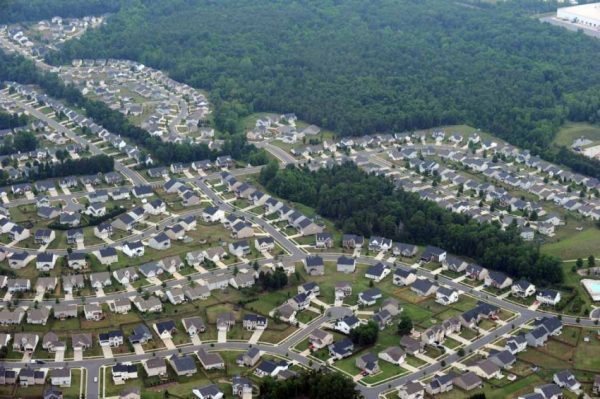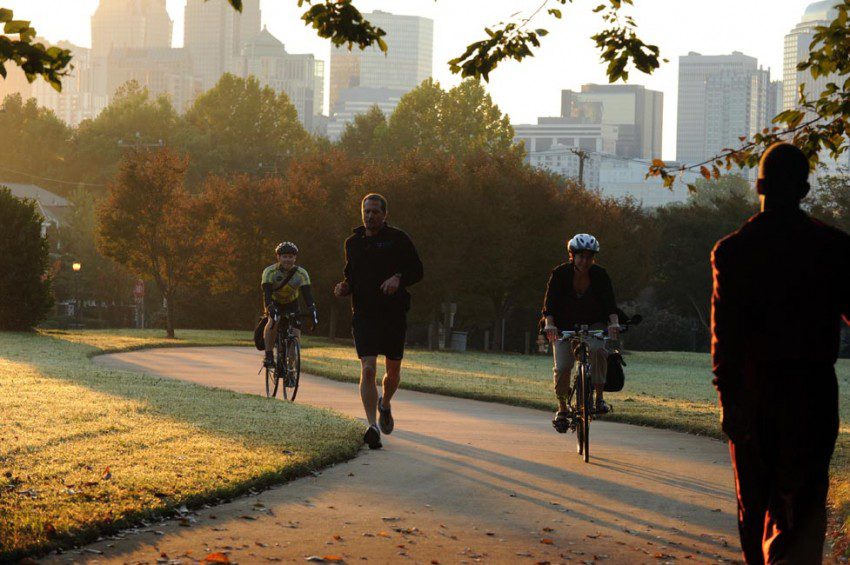Resilience: Many cities, many meanings

CAMBRIDGE, Mass. – On the day much of the Boston area stayed indoors for the manhunt of a Boston marathon bombing suspect, I was in town for a conference on “The Resilient City.”
Like almost everyone in Boston, most conference attendees obeyed the April 19 “stay indoors” order. And the whole bizarre experience – seeing usually crowded streets deserted – gave a different twist to the idea of city resilience, one that may help broaden what we think the term means.
Typically, “resilient city” denotes one that can survive and thrive amid environmental degradation, global climate change and massive population growth worldwide. The World Urban Campaign website says, “A Resilient City is one that can withstand and recover quickly from natural or human-made disaster.”
I suppose a massive hunt for a youth believed to be armed and dangerous (in fact he was hiding, wounded, in a backyard boat) would be in the category of human-made disaster. And Boston’s citizenry, by heeding warnings and obediently staying inside, did their part to help assure their city’s resilience to the trauma of the marathon bombing.
Boston, with its history of survival and change over several centuries, is a particularly apt place to ponder what “resilience” really means for a city. Why can some cities stay healthy, while others seemingly can’t? Different cities, obviously, need different strategies.
Even the conference itself was resilient. Its sponsors – the Lincoln Institute of Land Policy, the Nieman Foundation and Harvard’s Graduate School of Design – produced an abbreviated agenda for Saturday. One powerful, if gloomy, presentation came from the Brookings Institution’s Alan Mallach. He talked about “legacy cities” – a term coined to avoid the more negative “shrinking cities.”
Not all U.S. cities are distressed; some are thriving. But while even places like Detroit, Cleveland and St. Louis remain important job centers, they’re seeing dramatic increases in spatial, social and economic disparities. “The economic city is becoming increasingly uncoupled from the geographic city,” Mallach said. Too many city residents lack the education needed for the available jobs, and so they live in persistent poverty. Wealthier, better educated suburban residents commute into the city to fill the jobs, a geographical mismatch akin to the income and education mismatches.
He cautioned about the tendency to let good news about downtown revitalization overshadow the gloomier, larger picture. “If I hear, read or see one more article or blog about how Detroit is coming back … I may get violent,” Mallach said. Downtowns in Detroit, St. Louis, Cleveland and Cincinnati are spectacular, he said. That’s the easy part: “Downtowns are the low-hanging fruit of urban regeneration.”
And the much ballyhooed return of the Millennials to U.S. downtowns? Yes, that’s progress for legacy cities, Mallach said. His caution: “But they are exacerbating the disparities” of poverty.

Reporter Steven Litt of The Plain Dealer noted that his city, Cleveland, now has fewer than 400,000 people in a region of 2 million. Jobs keep moving out, as the paper reported this month. “Who owns the problem?” Litt asked Mallach. “Who is responsible for dealing with it?”
Nobody owns the problem, came the reply. Yes, city and local governments have to deal with problems, but many lack the will or capacity to deal effectively with the larger situation. “We do not have effective regional government to address the issue,” Mallach said. And, “Most state governments have effectively turned their backs on the cities.”
But what about all those cities – my city, Charlotte, is among them – that aren’t legacy or shrinking cites? Their challenges, if they’re to stay strong, have more to do with the future than the past. And the future is daunting, even for places gaining population, jobs and new businesses. The difficulties of retrofitting sprawl and reshaping transportation systems can seem insurmountable, even for cities that don’t have to worry about sea level rise.
Regardless of what you think about sea level rise, John Macomber of Harvard Business School predicted that that the world will see more flood disasters. As millions flock to cities, many of them in coastal areas – the poor will tend to settle in low-lying areas avoided by the wealthy. So even if seas don’t rise, with more people living on flood-prone land, we’ll see more lives lost to flooding.
In case you’re not pessimistic enough yet, consider this wisdom from Mallach. He grew up in Israel, and in Hebrew there are two words for “hill,” he said. One means the natural landform. The other is “tell” – the mound that remains at an abandoned human settlement. “Cities historically come and go,” he said.
But with today’s extensive public infrastructure and social safety net, our cities aren’t going away, he said. And while Mallach benefits from his mountains of city data, I’m still more optimistic. In Charlotte, where the downtown footprint is tiny compared with the city’s 300-square-mile footprint, inner-ring neighborhoods of ’50s and ’60s suburbia-style houses are reviving, attracting young singles and families determined to live as close to the center as they can afford – as long as it’s walkable and bicycle friendly.
Yes, a downtown that’s vacuuming in educated young people may be low-hanging fruit, but even Mallach conceded, “A rising tide lifts some boats at least a little.” And neighborhood blight gets lifted a house, and a block, at a time. Will that, alone, save Detroit, which has lost more than 60 percent of its population since 1950? Not likely. But cities aren’t alike. Maybe every city, even a legacy city, has its own form of resilience.
Opinions in this article are those of the author and don’t necessarily reflect the opinions of the UNC Charlotte Urban Institute or the University of North Carolina at Charlotte.